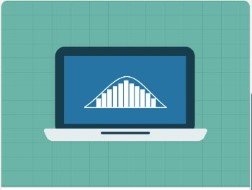A/B Testing in Python
Learn the practical uses of A/B testing in Python to run and analyze experiments. Master p-values, sanity checks, and analysis to guide business decisions.
Course Description
In this course, you will dive into the world of A/B testing, gain a deep understanding of the practical use cases, and learn to design, run, and analyze these A/B tests in Python.
Discover How A/B Tests Work
Did you know that you are almost guaranteed to participate in an A/B test every time you browse the internet? From search engines and e-commerce sites to social networks and marketing campaigns — all businesses hire the best data analysts, scientists, and engineers to leverage the power of AB testing. Testing different variants can help optimize the customer experience, maximize profits, inform the next best design, and much more.
Learn About A/B Testing in Python
You’ll start by learning how to define the right metrics before learning how to estimate the appropriate sample size and duration to yield conclusive results. Throughout this course, you’ll use a range of Python packages to help with A/B testing, including statsmodels, scipy, and pingouin.
By the end of the course, you will be able to run the necessary sanity checks that guarantee accurate results, master the art of p-values, and analyze the results of A/B tests with ease and confidence to guide the most critical business decisions.
What You’ll Learn
Overview of A/B Testing
In this chapter, you’ll learn the foundations of A/B testing. You’ll explore clear steps and use cases, learn the reasons and value of designing and running A/B tests, and discover the most commonly used metrics design and estimation frameworks.
Data Processing, Sanity Checks, and Results Analysis
Here, you’ll discover a concrete workflow for cleaning, preprocessing, and exploring AB testing data, as well as learn the necessary sanity checks we need to follow to ensure valid results. You’ll explore a detailed explanation and example of analyzing difference in proportions A/B tests.
Experiment Design and Planning
In Chapter 2, you’ll cover the experiment design process. Starting with learning how to formulate strong A/B testing hypotheses, you’ll also cover statistical concepts such as power, error rates, and minimum detectable effects. You’ll finish the chapter by learning to estimate the appropriate sample size needed to yield conclusive results and tackle scenarios with multiple comparisons.
Practical Considerations and Making Decisions
In the final chapter, you’ll develop frameworks for analyzing differences in means and leveraging non-parametric tests when several assumptions aren’t met. You’ll also learn how to apply the Delta method when analyzing ratio metrics and discover the best practices and some advanced topics to continue the A/B testing mastery journey.







There are no reviews yet.